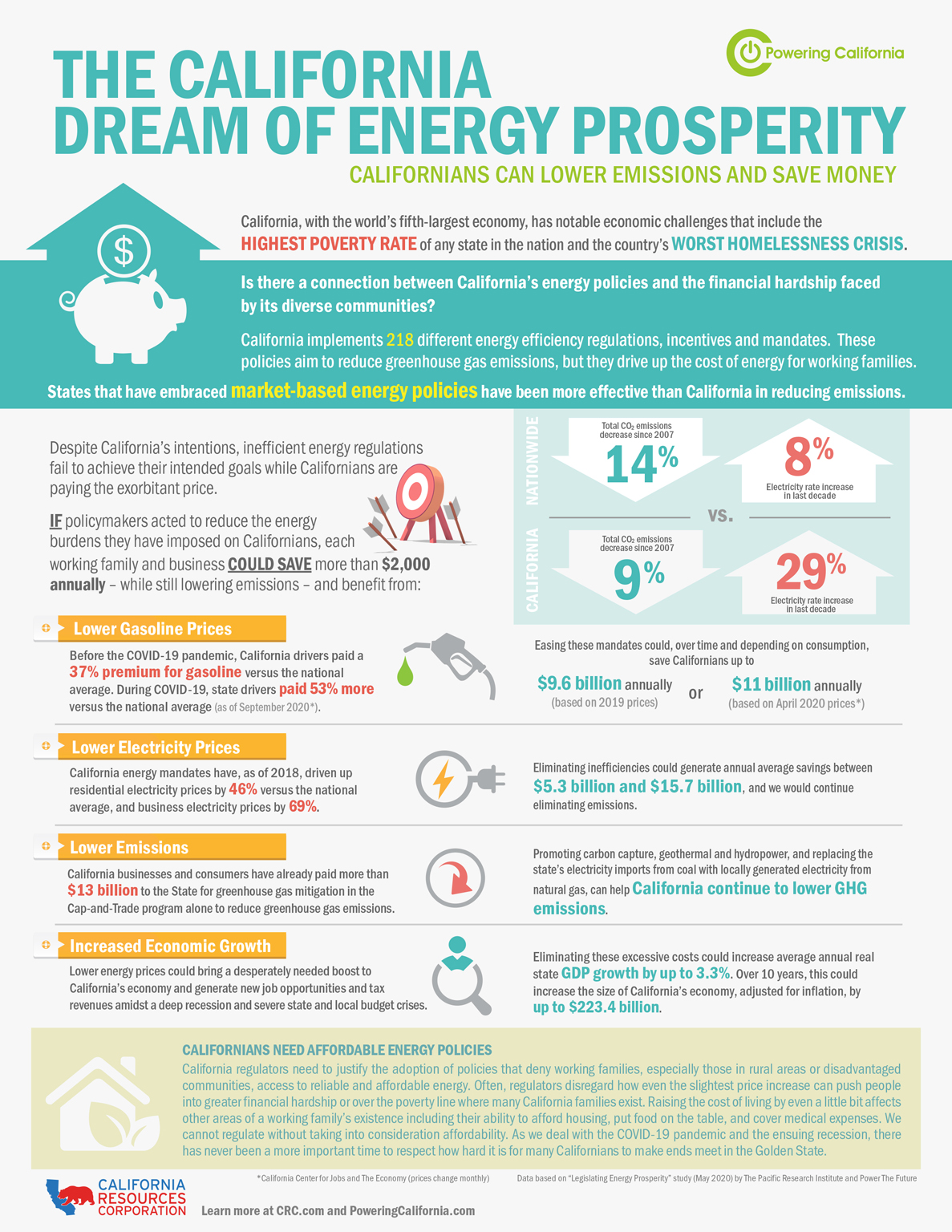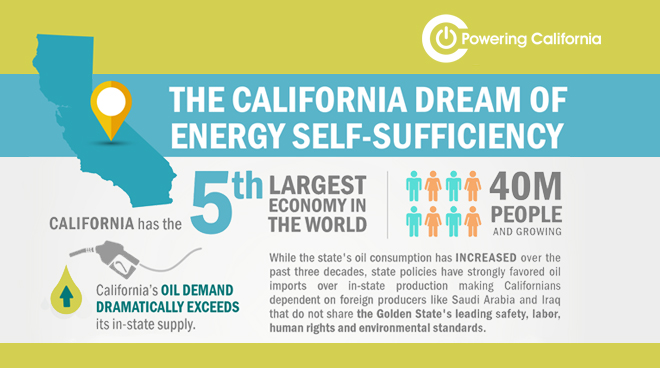The California Dream of Energy Prosperity
California is a storied land of opportunity, but even with the impression of prosperity drawn from being the world’s fifth-largest economy it has notable socio-economic challenges that include the highest poverty rate (18.1%) of any state in the nation, the country’s worst homelessness crisis, exceptionally high energy costs, an unreliable electricity infrastructure and fiscal crises. In addition to these issues, like the rest of the country, the COVID-19 pandemic has hit the state’s economy hard, costing families’ jobs, income and impacting state and local budgets.
The impact of the coronavirus pandemic was a shock to the system and continues to take an unprecedented toll, but there are many lost opportunities – especially for the 40% of Californians who are below or near poverty – that are not random, nor due to a bad turn of events. They are directly tied to California’s policy choices that masquerade the weight of regressive programs under the veneer of progressive virtues. For example, following California Governor Gavin Newsom’s signing of an executive order to make all new-car sales zero-emission by 2035, the California Air Resources Board released a discussion draft of strategies to meet the Governor’s goal as well as longer-term climate targets with an initial price tag for the next five years of $15 billion to $30 billion.
California currently implements 218 different energy efficiency regulations, incentives and tax programs that are aimed at reducing greenhouse gas emissions, but they often times do more harm than good and haven’t been shown to help California be a leader in emission reductions. In fact, California is less effective at reducing greenhouse gas emissions than states that have embraced market-based energy policies. Since 2007, total carbon dioxide emissions have fallen 14% nationally while emissions in California only declined 9% during the same time period. Additionally, these different policies reduce job and income growth across the state but are felt more severely in the Central Valley and Inland Empire regions, areas which are much poorer than coastal communities. These include policies that delegate the cost of reduction of greenhouse gas emissions and energy taxes all the way to families, making our state an even more expensive place to live.
Californians want a sustainable energy future, but the cost of mandates that rely on technologies that currently do not exist threaten reliability and have driven the Golden State’s energy rates to be among the highest in the nation. Despite their professed benevolent intention, these policies are detached from real-world outcomes and fail to achieve their intended goals. While other states have been outpacing California in greenhouse gas reduction over the last decade, California’s policies have been causing our costs of electricity to skyrocket. Electricity rates in the rest of the US increased 8%, while in California they increased 29%. Another way to look at it is that in the last decade, California’s electricity rates increased 262% more than the rest of the country. While the Golden State’s policies are not leading to a larger decline in emissions, Californians are paying the exorbitant price.
If lawmakers acted to alleviate unnecessary costs from state energy mandates, Californians living through these unprecedented times could save more than $2,000 annually – while still lowering emissions – according to a study by thinktank Pacific Research Institute and Power the Future.
“With millions now unemployed or furloughed, state policymakers must act to help lower and middle-income Californians weather this economic storm,” said Dr. Wayne Winegarden, the study’s author.
“Embracing free-market energy policies could put real money into the pockets of Californians who are struggling to make ends meet due to the coronavirus-fueled recession,” said Daniel Turner, Power the Future founder and executive director. “It would be the equivalent of a major tax cut for hard-working Californians – while still enabling the state to achieve its lower emissions goals.”
Learn more below.


